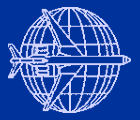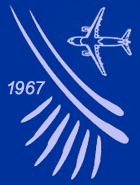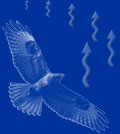|
Operational anti-bird protection work implies timely measures of detection of birds at the aerodromes and tracks of aircrafts. Both the crews and the staff working on the field are involved in the visual bird detection activities . The ornithological condition can be defined also by means of radio location equipment. Current data on the appearance of birds is used to determine the danger, if the risk is too high the landings and taking-offs may be stopped. The degree of risk may be different according to the number and species of birds and character of their behavior as well.
If the bird scaring activities are required they must be operatively held by the qualified staff from the corresponding department √ Bird Control Group (BCG) of the airport or aerodrome√ or any other airport departments such as aerodrome service. Active bird scaring techniques include special mobile and individual repellent means. As a rule, we use bioacustic equipment, pyrotechnics, birds of prey, radiocontrol models of air predators and others.
The crews of the aircrafts receive warnings from the land services and maneuver in order to prevent the bird strikes and decrease the dangerous consequences.
Passive means include the application of new materials, technologies and construction facilities increasing the protection of parts of the aircrafts, their resistance t owards birds. The increase of the resistance of the plane is not a part of Ornithological Provisiob complex.
Passive protection of the aerodrome form birds is done locally on the areas of their most frequent arrival, permanent presence, where they form numerous groups, according to the hazard the birds of their species cause.
The protection zone in this case may be the artificial landing grounds, the crossings of the
taxiways, soil territories of the aerodrome, roofs of the airport buildings and the like. In this case different kinds of mechanical obstacles can be used, which physically control the birds, such as covering or blocking up nets, spikes and so on. Passive protection may be provided by automatic stationary bird scaring devices, which influence birds optically and acoustically. The passive bird-scaring can be operated both by simplest means (driven by wind) and by complicated electronic programmable ones.
Bird traps are also used to decrease the number of species causing danger to the aircrafts, inhabiting the areas around the airport. The traps may be of different constructions and can be both group and individual. In accordance with the ICAO recommendation the birds caught must be transported away from the airport not less then 50 km to be released into the wild.

|
|
The environment transformation measures are directed to change the natural conditions, influencing or to a greater degree defining the birds behavior, e. i. remove or decrease their access to food and water, shelters, places suitable for nesting and safe night and day rest. These measures include the cutting down of the shrubs, regulation of the herbage height at the soil parts of the airdrome, and replacement of the various species of herbs with a single most suitable one, disinsection and deratisation, removal of small water reservoirs and liquidation of places suitable for nesting, transferring of the agricultural crops attractive for birds, hard litter damps and similar objects out of the 15-km aerodrome territory and so on. The realization of the ecological means is the optimum salvation to reduce the possibility of a strike caused by an appearance of birds at the aerodrome territory and its airspace.
The potential hazard which can be caused by birds at the area where the airport is situated can be estimated according to the information gathered during long-term analysis of strikes in this particular area. The administration of the airport is obliged to register all cases of birdstrikes irrespective of the their consequences.
The potential hazard from the ecological point of view can be determined in the process of eco-ornithological investigationof the area where the airport is situated. The full-scale eco-ornithological investigation requires collection and systematization of data concerning places and time of birds disposition within a year's time and must be held by a qualified ornithologists. In the course of investigation there should be singled out certain factors which create special attractiveness to birds and the ways of influencing the ornithological condition to reduce the risk of strike with an aircraft. The strike information analysis date is put together with the data of eco-ornithological investigation for a more precise estimation. The summary data received is used as an informational basis to plan the bird prevention work at the airport.
The investigation of the bird strikes is necessary to gather and registrate information on circumstances and consequences of those strikes to make a deeper analysis and single out the reasons, that brought to the strike. The identification of the birds remains defining the species is in this case of significant importance. The modern scientific technologies make it possible even for micro fragments with the help of DNA analysis.
The organization of the SFG requires a certain member from the administration of the airport responsible for this kind of provision, for development of inner instructions (or a special chapter in the IPP), which is designed to fix the order of the SFG, the members involved, their responsibilities, to settle periodical measure plans (the Natural Objects Control Programs), to host the educational activities with the SFG members and other. The establishment of the airport committee on the bird strikes according to the recommendation of ICAO is a progressive step in the development of SFG of the given airport.
|



 State Scientific
State Scientific State Centre
State Centre Aviation Ornitology
Aviation Ornitology